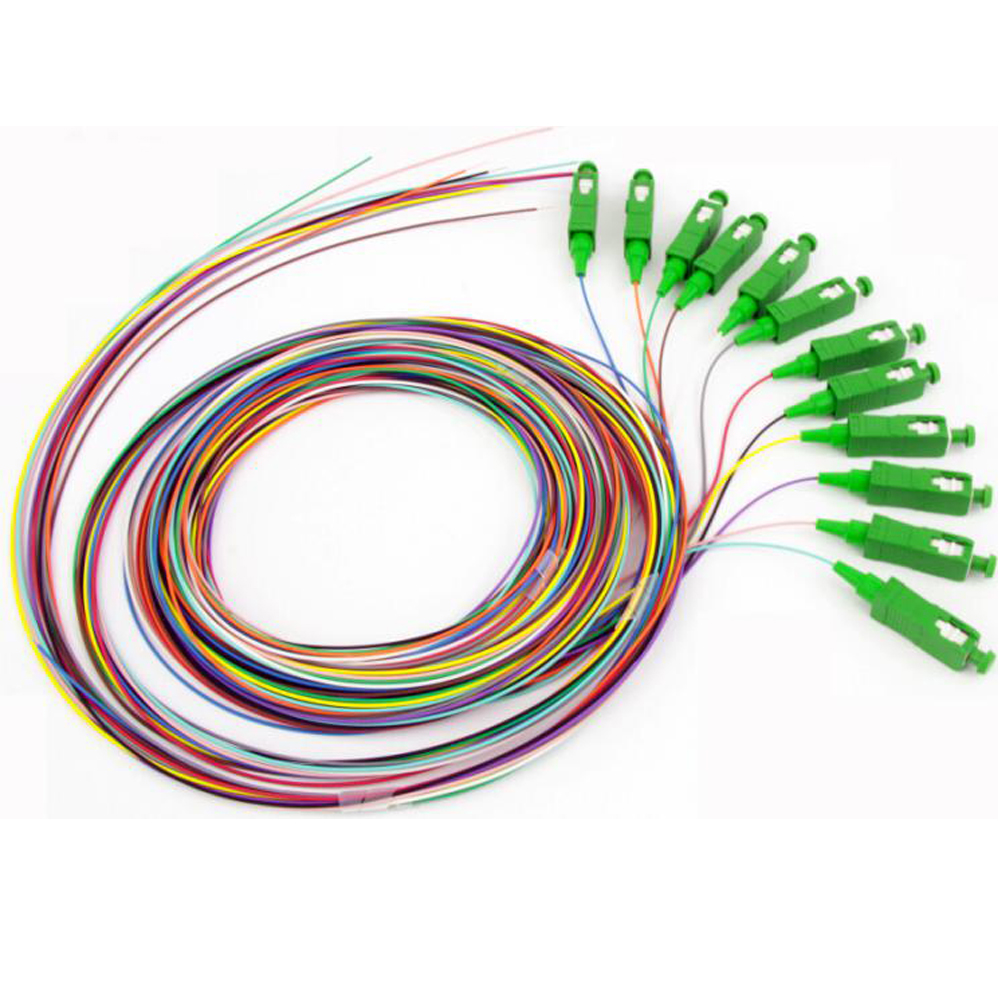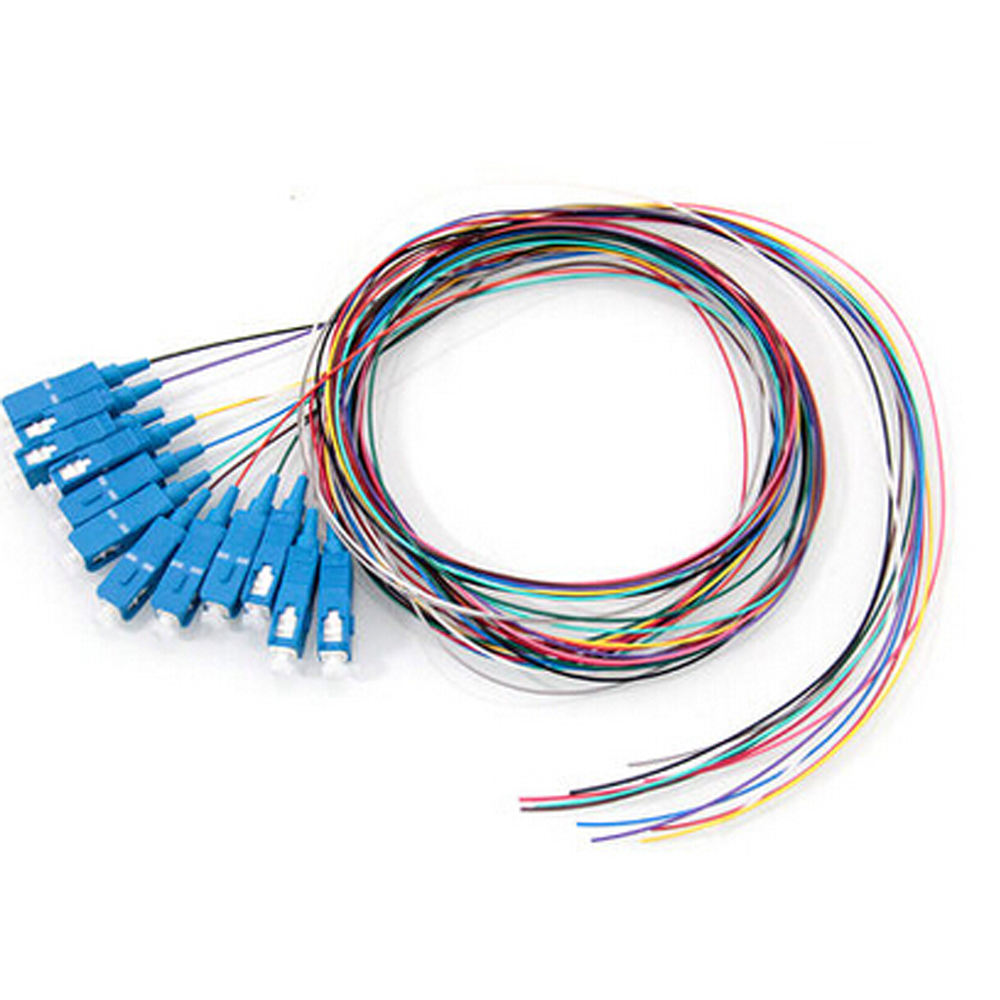In fiber optic cable installation, how cables are attached to the system is vital to the success of network. If done properly, optical signals would pass through the link with low attenuation and little return loss. Fiber optic pigtail offers an optimal way to joint optical fiber, which is used in 99% of single-mode applications. This post contains some basic knowledge of fiber optic pigtail, including pigtail connector types, fiber pigtail classifications, and fiber pigtail splicing methods.
Fiber Optic Pigtail Types

Fiber optic pigtails are available in various types: Grouped by pigtail connector type, there are LC fiber optic pigtails, SC fiber pigtails and ST fiber pigtails, etc. By fiber type, there are single-mode fiber optic pigtail and multimode fiber optic pigtail. And by fiber count, 6 fibers, 12 fibers optic pigtails can be found in the market.
By Fiber Type
Fiber optic pigtails can be divided into single-mode (colored yellow) and multimode (colored orange) fiber. Multimode fiber optic pigtails use 62.5/125 micron or 50/125 micron bulk multimode fiber cables and terminated them with multimode fiber optic connectors at one end. 10G multimode fiber cables (OM3 or OM4) are also available in fiber optic pigtails. The jacket color of 10G OM3 and OM4 fiber optic pigtail is usually aqua. Single-mode fiber pigtail cables use 9/125 micron single-mode fiber cable and terminated with single-mode fiber connectors at one end.
By Connector Type
According to different types of pigtail cable connector terminated at the end, there are LC fiber pigtail, SC fiber pigtail, ST fiber pigtail, FC fiber pigtail, MT-RJ fiber pigtail, E2000 fiber pigtail and so on. With different structures and appearance, each of them has their own advantages in different applications and systems. Let’s go through some widely used ones.
SC Fiber Optic Pigtail: SC pigtail cable connector is a non-optical disconnect connector with a 2.5mm pre-radiused zirconia or stainless alloy ferrule. SC fiber pigtail is economical for use in applications such as CATV, LAN, WAN, test and measurement.
FC Fiber Optic Pigtail: FC fiber pigtail takes the advantage of the metallic body of FC optical connectors, featuring the screw type structure and high precision ceramic ferrules. FC fiber optic pigtails and its related products are widely applied for the general applications.
ST Fiber Optic Pigtail: ST pigtail connector is the most popular connector for multimode fiber optic LAN applications. It has a long 2.5mm diameter ferrule made of ceramic (zirconia), stainless alloy or plastic. Hence SC fiber pigtails are commonly seen in telecommunications, industry, medical and sensor fields.
Like fiber optic patch cords, fiber optic pigtails can be divided into UPC and APC versions. Most commonly used types are SC/APC pigtail, FC/APC pigtail and MU/UPC pigtail.

By Application Environment
Some pigtail cables are specially installed to withstand the harsh or extreme environments, so here comes armored fiber pigtail and waterproof fiber pigtail.
Armored Pigtail: enclosed with stainless steel tube or other strong steel inside the outer jacket, armored fiber optic pigtails provide extra protection for the fiber inside and added reliability for the network, while reduce the unnecessary damage caused by rodents, construction work, weight of other cables.
Waterproof Pigtail: designed with a stainless steel strengthened waterproof unit and armored outdoor PE (Poly Ethylene) jacket, waterproof fiber pigtail is a great fit in harsh environments, like communication towers, CATV and military. Waterproof pigtail cable boosts good toughness, tensile and reliable performance, facilitating the use in outdoor connections.
Contact: Andy Huang
Phone: 0086-755-89239407
E-mail: sales@beskco.com
Add: No.3106,Longgang Avenue,Pidi Town, Longgang District, Shenzhen China
We chat